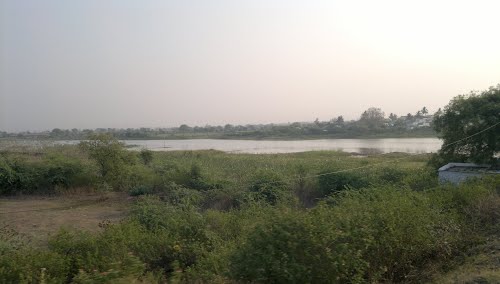Continuing last week’s story on Time Travel, Roopa Pai tells us how the Kalachuris came to power replacing the mighty Chalukyas on the banks of the River Bennithora.
Time Travel – 7
Last week, we spoke about how the reign of Chalukya king Vikramaditya VI lasted half a century and was a glorious chapter in Karnataka’s political and literary history. But the head that wore the crown did not rest easy through those 50 years. Enemies from all sides were constantly at the gates. The Cholas were a permanent thorn in the side. The Kakatiyas, who ruled from Warangal in Andhra Pradesh, kept nibbling away at Chalukya territories. A new dynasty called the Hoysalas made inroads from the south. But the unkindest cut of all came from their own trusted feudatories, the Kalachuris, who rebelled at every opportunity.
Who Were These Kalachuris?
No one is quite sure. There is intense debate among historians about whether they were locals or whether they originated somewhere else on the subcontinent. The majority, however, believe that they were not locals at all, but immigrants from the northern region.
One popular theory states that they were possibly descendants of an ancient dynasty called the Katachuris who had ruled Central India – the regions of Malwa, Gujarat, Konkan, and Maharashtra – hundreds of years ago. In the 6th century, it is believed, King Mangalesa of the early Chalukyas (of Badami) decimated them, and they disappeared between the cracks of history. Until they emerged once again in the 10th century as the Kalachuris, minor chieftains under the later Chalukyas, at a place called Mangalavada near Tumkur.
Digging Into Ancient Written Records
Why is there so much uncertainty about the origins of Indian dynasties? Because, for one thing, not many of them kept detailed written records about their origins. Of the records that were kept, not many have survived. Of the ones that have survived, few are 100% reliable. Remember that any written record had to have the approval of the king, which means that they invariably flattered the king as he demanded!
Kings would proclaim – falsely – that their dynasty was descended from some great king of the past, simply to give themselves the legitimacy to rule. Many, many of them would even go so far as to say that they were descended from the Gods, or avatars of the Gods!
Sometimes the records refer to the king by his title and not by his real name – and until historians find some other record where the king is referred to both by his name and his title, they cannot be sure who each king is. For instance, even though Emperor Ashoka is such an important Indian historical figure today, with the Ashoka Chakra and the Three Lions Capital being part of our national flag and emblem, until a hundred years ago, no one had heard of his great deeds.
Inscriptions on rock had been found all over India, authored by a king called Devanam Piyadassi (‘Beloved of the Gods’) and there were a small number of Buddhist records that talked about a king called Ashoka who ruled from Patalaiputra, but it was only in the early 20th century that a dynastic list was found that named the king as ‘Ashoka Maurya – Devanam Piyadassi’. And only then did we realise that the two great kings were one and the same!

Rise Of The Kalyani Kalachuris
But let us get back to Kalyan, on the banks of the river Bennithora. After Vikramaditya VI died in 1126, the Kalachuris, who were already quite powerful, refused to recognise the new Chalukya king, who was too weak to bring them back into line.
In 1130, the ambitious Bijjala II took over as the chief of the Kalachuris. He was determined to throw off the yoke of the Chalukyas forever. In 1162 AD, he got his chance. Marching against the Chalukya king, Tailapa III, he defeated him, executed him and all the members of his family, and, with his hands reeking of blood, established the independent, sovereign kingdom of the Kalachuris at Kalyan.
Even though Bijjala’s rule would itself be short and stormy, he had ensured that the Chalukyas would never rise again.
Bijjala’s rule lasted only five years, during which time he fought off several enemies successfully. He was less successful at curbing a rebellion that erupted in his own kingdom, however. This rebellion was not a political one, but a social one, at the end of which Bijjala lay dead, assassinated by his own people. The Kalachuri kings that followed Bijjala were weak, and the dynasty died out completely by 1184 AD.
Ironically – and unfortunately for him – Bijjala is remembered today not for his own achievements, such as they were, but as the king who presided over the great social revolution that shook northern Karnataka in the 12th century, a revolution whose far-reaching effects are being felt even today.
Bijjala’s name is never used alone – it is always linked with the name of the leader of that revolution, the poet-saint-philosopher-politician who fought against the oppressive caste system and declared war against rigid Brahminical rites and rituals.
Who was this great reformer? You will have to wait until next week to find out!
Extra! Extra!
Do you want to take a crack at guessing who the great social reformer who made his mark during the time of the Kalachuris was? Here’s a clue: his statue is an important landmark on Race Course Road, opposite the Chalukya Hotel in Bangalore!
Liked reading this? Then you might also like to read Time Travel – Chronicling The Chalukyas Along The Bennithora.
This set of weekly columns was published in the student edition of Deccan Herald during the school year 2011-12.
If there’s any story that needs to be told, we will tell it. Write to us at contact@knowyourstar.com with your story lead, or contact us on Facebook or Twitter.